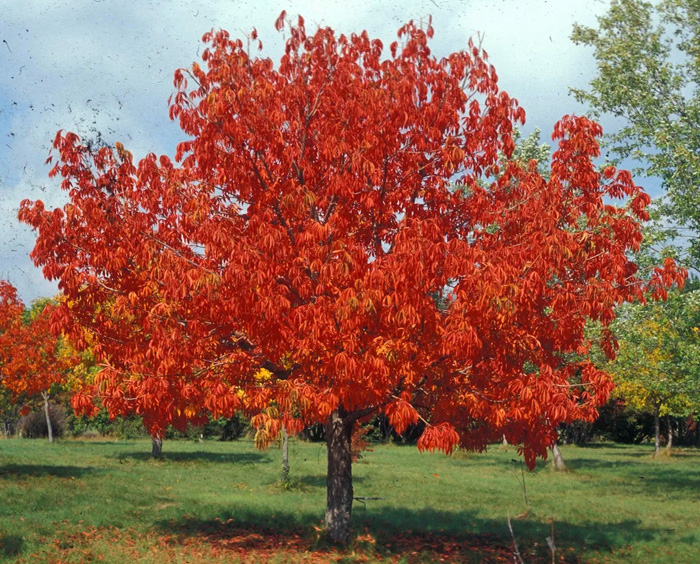Deeply Rooted
Go Ohio Buckeyes!

No I’m not talking about a sports team. Ohio Buckeye is actually a type of nut tree. Yes the team is called the Buckeyes because of the tree not the other way around. The longer I’m in this business the more excited to get about trees that aren’t originally from our area. Let’s face it we have a short and somewhat drab list of native trees given our Northern Exposure. I know others would disagree and would love to stay native. But the reality is there just isn’t as much to choose from without supplementing it from nearby areas. Ohio buckeye is one of those trees that surprises everybody. Yes it is native to Ohio but you wouldn’t think it would be able to handle our winters given its milder native location. Surprise! This is a winner. There are many reasons to consider Ohio buckeye as one of the trees to put into your repertoire of yard interests.
Let’s start with culture. It’s a relatively easy grower, it can handle some dry and some damp occasionally as long as it doesn’t stay soggy. Because it has a taproot it can reach deep for water making it drought tolerant. However it’s always going to do better and grow faster if it gets adequate moisture each season. It can handle quite a bit of cold and I would consider it to be of equal harness to our American Linden. It is also not fussy about our Red River gumbo and can handle our high Ph. Would I consider it as a shelterbelt tree? Maybe, maybe not, that is yet to be tested.
So positive reasons to plant a buckeye. There’s no leaf like it on any of our other trees. It opens up with a huge bud and then reveals its star-shaped leaf usually with five to seven leaflets. We also call this a palmate leaf. One of my customers called it his marijuana tree because it had some apparent resemblance. It also has creamy white flowers similar to but less impressive then a lilac. The flower is held similarly but has I’m more open Airy appearance. The tree does all of its growing within about three weeks. Under good conditions it can grow up to 18 inch (45 cm) within 3 weeks. It develops nuts with a leathery and sometimes prickly husk. They fall off a tree in late September a crack open to reveal why the tree is called Ohio buckeye. The nut has a glossy, chestnut-brown shell. They certainly would have a decorative value for the creative mind. Just having nuts makes it rather unique in Manitoba as there are no native nut trees unless you consider our Burr Oak in that category. The last and possibly best feature of this tree is that it has good fall colour ranging from orange-gold to solid red.
There are some moderately negative features I suppose. It won’t put up with excessive water. That’s easy to solve, just plan it on higher ground. The taproot makes it more difficult to transplant as a larger tree unless container-grown. Oh, so once you plant it don’t move it. It can sometimes defoliate a little early if it has had a lot of sun scorch or drought. And a few people consider the nuts a nuisance once they fall and have to be cleaned up. I personally find the strong features of the tree outweigh the minor inconveniences. It is a beautiful and unique tree that works here quite well. You will see it become more popular in our landscape in the future. As we deal with diseases that hit our native trees like Dutch Elm Disease and Emerald Ash Borer it is a great idea to keep diversifying our arsenal of trees and have fun with the different aesthetic beauties that we can grow.




